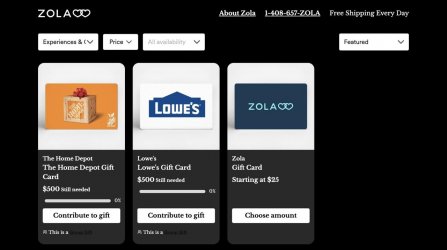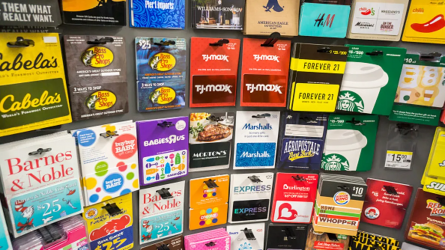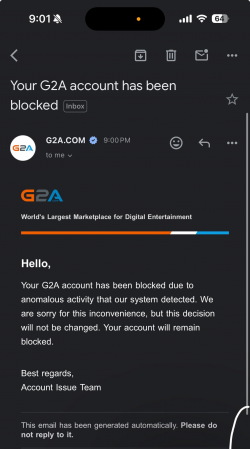
Giffy this, giffy that. Last time I dropped warnings in "Carding Philosophy: Why Giftcards Are (Generally) a Bad Idea," some of you still charge in headfirst, convinced you're about to hit the jackpot with gift cards. I get the appeal—digital cash, no shipping, just an email and a code. Looks easy, right? That's why so many newbies keep torching their cards on this shit, only to get smacked by reality.
No point in repeating the same old mistakes. Let's cut through the noise and get into a smarter way to approach gift card carding—one that actually reflects how the game's evolved. I'll break down the concept, then walk you through a sample method so you can see what real strategy looks like.
Pay attention.
Gift Cards: Why It's a Losing Game
Carding gift cards these days is a losing battle. Every site worth hitting has been hammered to death by desperate carders, and retailers have locked things down tighter than ever. You're up against fraud filters, ID checks, and a swarm of other wannabes all chasing the same scraps.
Even if you get through, the payout isn't worth the trouble—lost time, burnt cards, and gigs of proxies wasted for a few hundred bucks, if you're lucky.
If you're still grinding away at gift cards on Eneba, you're wasting your time and risking your stack for pennies. But don't sweat it—there's a smarter, more profitable angle: hitting sites that don't mainly sell gift cards. Let's shift gears and get into that.
Profileration of Gift Cards
See, gift cards aren't just hiding on those obvious "gift card" sites everyone's already hammered. They're everywhere—sometimes buried in the product list of massive retailers, sometimes tacked onto the checkout page of a random online business that doesn't even specialize in digital goods. Hell, half the time these companies add gift cards just to pad their inventory or because their e-commerce platform nags them to do it. It's not about the size of the shop—some of these are big names with clueless web admins who treat gift cards like any other SKU.
So don't waste your time fighting over scraps on the usual targets like Eneba or G2A. There's a whole ecosystem of legit businesses, big and small, that slap up gift card options and then forget about them. Most of them have no clue about the risks, and their fraud controls are a joke compared to the sites that know they're a magnet for carders. That's where the real opportunity is: not in chasing the same tired targets, but in spotting the overlooked ones that never expected to be in the crosshairs.
A Great Example: Zola
Let's get real about Zola.com. On the surface, it's all wedding bells and happy couples, but dig a little deeper and you'll find a gift card system that's way less guarded than you'd expect. Zola isn't some gift card superstore—most people use it for wedding registries, not digital cash-outs. That's exactly why it flies under the radar.
Zola offers its own digital gift cards, plus cards from big brands like Airbnb, Delta, Target, and more. They're not plastered all over the homepage, but they're there if you know where to look. And because Zola's main business is wedding stuff, not gift cards, their fraud controls are focused on making sure nobody's scamming a blender—not on stopping someone from grabbing a few hundred bucks in digital credit.
Here's how it works:
- Payments go through Stripe. Your card better be fresh—none of that resold, bind-checked trash. Stripe's not stupid; if your card's been passed around, it's getting nuked. Use Have I Been Sold? - BinX to double-check the card before you even think about buying. Maximize your odds, or get ready to watch Stripe eat your lunch.
- Digital delivery. Zola's own cards are sent by email. Most of the third-party cards are digital too. No waiting for the mailman.
So what's the move?
- Make two accounts. One as a couple (make it look real—add a wedding date, maybe a stock photo), and one as a guest.
- Build a registry. Add a mix of normal gifts and a few gift cards. Don't make it obvious you're just after cards—throw in some kitchen crap for camouflage.

- Buy from the guest account. Use a clean card and a good proxy. Zola isn't hard, but don't get lazy. Buy a gift card from the registry. You can try group gifting for bigger amounts, but don't get greedy right away.
- Checkout. Enter the card details. If Stripe likes your card, you're in. The couple (your other account) gets notified.
- Cash out. For third-party cards, check your email or registry for the code. Move quick—if the card's hot, you want to use it before anyone catches on.
Heads up:

- Over $1,000 in cash funds triggers Zola's photo ID check—no solid fake, no dice.
- Zola runs 3DS and flags sketchy setups. Fresh emails, clean proxies, separate IPs—always.
- Even better: If your registry looks legit enough, you can run multiple gift card transactions back to back before triggering any red flags. This means one solid registry can easily handle around 8-10 gift cards without issues.
Conclusion
The future of gift card carding is all about slipping past the herd. The smart move is to target shops that treat gift cards like a side hustle—tucked away behind the real products, barely guarded, and mostly ignored by other carders. That's where the weak spots are, and that's where the real profits hide. Stick to the obvious targets and you'll get burned with the rest. Go for the overlooked, and you'll stay in the game longer.
Now get carding and get good. d0ctrine out.
Last edited by a moderator:









